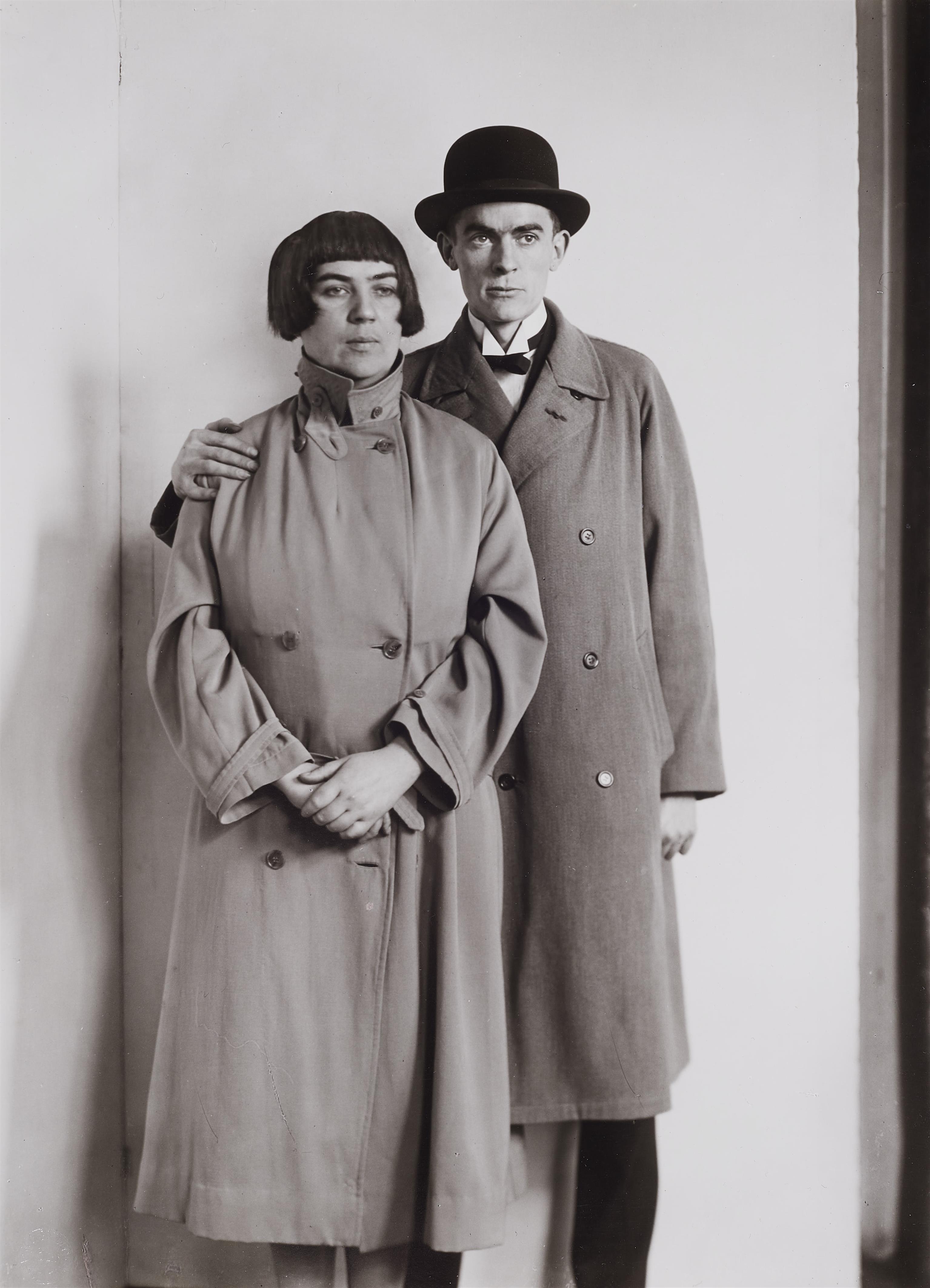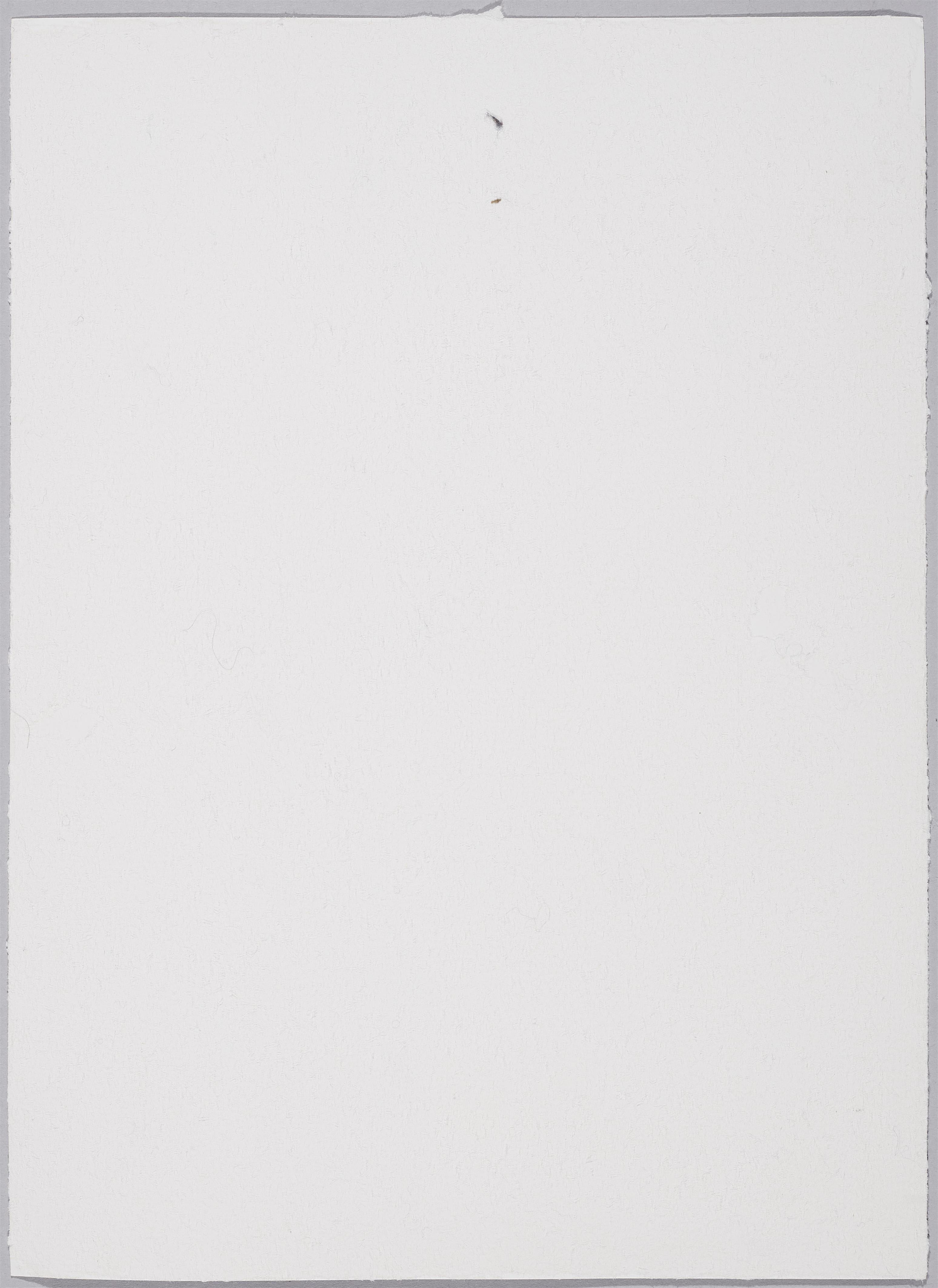August Sander
Der Maler (Anton Räderscheidt und Marta Hegemann)
c. 1925
Gelatin silver print, printed probably 1950s. 28.6 x 20.8 cm. Photographer's blind stamp lower left. Accompanied by original paper label, thereon typewritten title.
Artist’s portraits play a significant role in August Sander’s work. Sander presents them in his ‘Menschen des 20. Jahrhunderts’ (People of the 20th century) as a singular occupational group (Group V – ‘Die Künstler’ [The Artists]), which is remarkable as he summarises all other professional groups under the term ‘Die Stände’ in Group IV. In terms of numbers alone, the group of artist’s portraits forms a focal point in Sander’s work, but they were also important for him privately: Numerous visual artists whom Sander portrayed throughout the 1920s, including Franz Wilhelm Seiwert, Heinrich Hoerle, Jankel Adler, Otto Dix and Anton Räderscheidt, counted amongst his friends, or belonged at least to his circle of acquaintances. It is interesting that Sander did not include the present artist double portrait of Anton Räderscheidt and his wife Marta Hegemann in said Group V (‘Die Künstler’) but assigned it to Group III (‘Die Frau’ [The Woman]), alongside double portraits of the couples Tata (Martha) and Heinrich Hoerle, and Martha and Otto Dix. Married to Anton Räderscheidt since 1918, Hegemann was herself a printer and painter from the Dada circle. Sander did not assign her an artist’s status of her own, but showed her in her role as wife, nevertheless under the title ‘Malerehepaar’ (Painter Couple), which makes clear that he certainly acknowledged her role as an artist.
Sander shows the two sitters with serious expressions, their eyes not focused on him but on a viewpoint to the right of the lens. With their high-necked coats, they both appear distant, almost like people in transit. It is an unconventional couple’s portrait, neither of the spouses showing any affection to the other in their posture. The artist’s hand on his wife’s shoulder is the only evidence of their intimacy. The photograph also differs in further features from Sander’s usual studio shots, which mostly show the sitters seated, in half-portrait, and with normal clothing, and not as here, standing and in outer wear; there are also such ‘conventional’ double portraits by Hegemann/Räderscheidt without coat and hat. The fact that it is nevertheless a studio portrait is only revealed by this later print from the original negative. The primary cropped version, which Sander chose for his ‘Menschen des 20. Jahrhunderts’, is cropped closer to the figures and shows them in front of a uniformly neutral background.
With his slim stature, in a coat, with bow tie and high bowler hat, Anton Räderscheidt is reminiscent of that famous singular portrait that Sander took of him early morning on the deserted Bismarckstrasse, in the mode of the modern metropolitan man. In the present picture, Sander seems to have deliberately chosen a variant corresponding to the above-mentioned portrait which emphasises the cosmopolitan character of the artists depicted and underscores the individuality of their personalities.
Provenance
Private property, Paris
Literature
Die Photographische Sammlung/SK Stiftung Kultur, Köln (ed.), Zeitgenossen. August Sander und die Kunstszene der 20er Jahre im Rheinland, exhib.cat. Josef-Haubrich-Kunsthalle Köln i.a., Göttingen 2000, ill. p. 92; Die Photographische Sammlung/SK Stiftung Kultur, Köln (ed.), August Sander. Menschen des 20. Jahrhunderts, Vol. 3: The Woman, Munich i.a. 2002, ill. p. 47 (each variant, here titled: Malerehepaar [Anton Räderscheid und Marta Hegemann])




